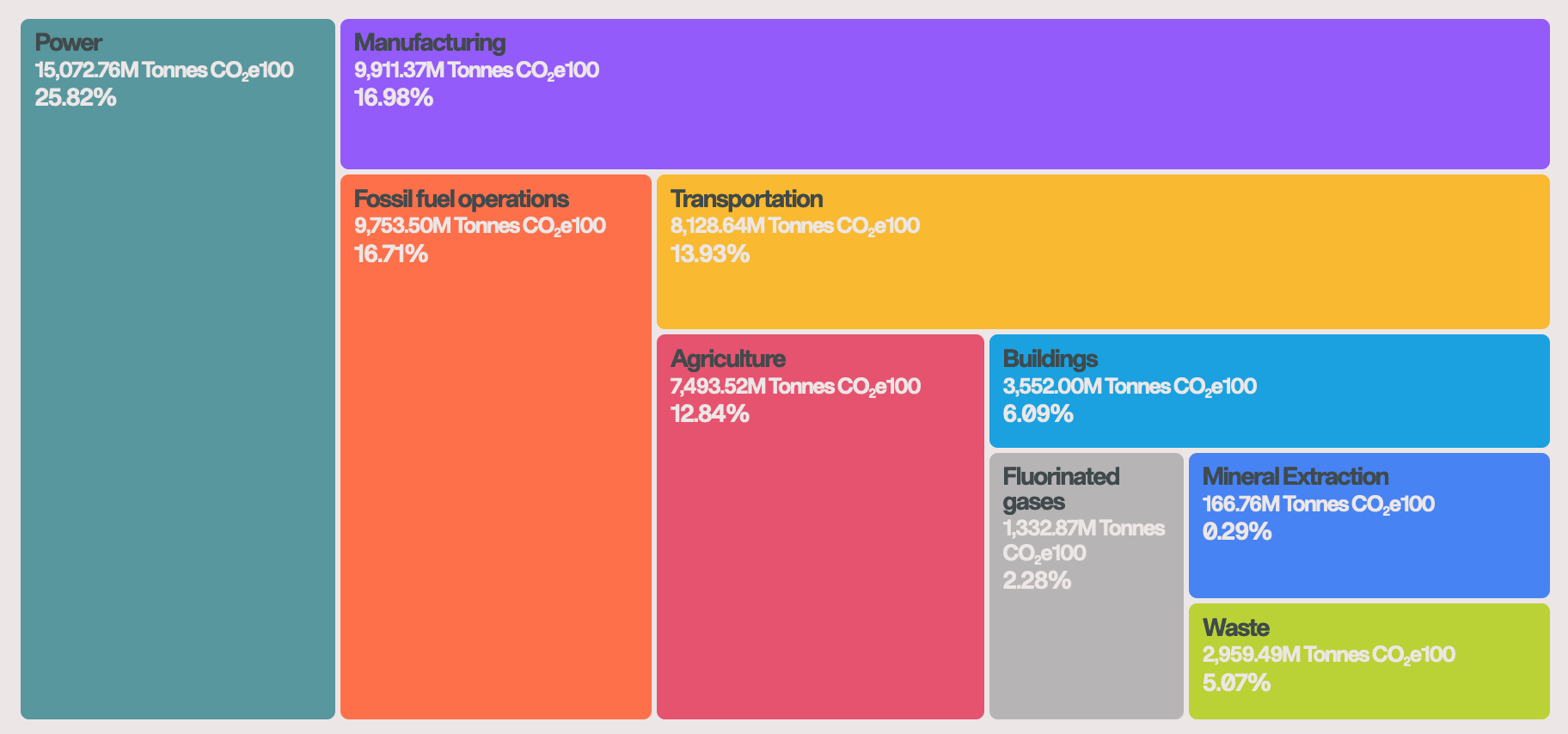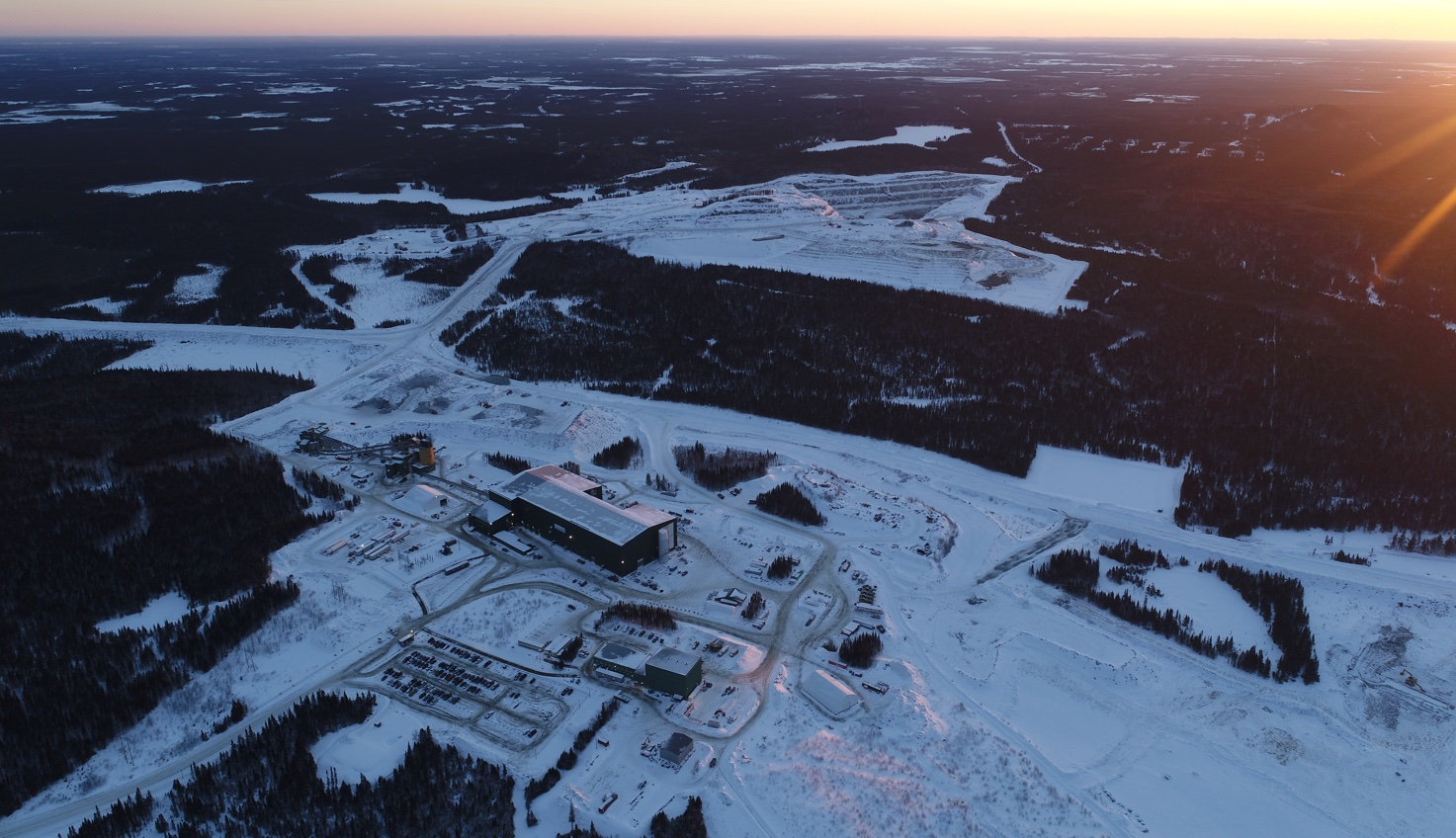Tesla, General Motors (GM) and others have signed an agreement to use a database tracking greenhouse gas emissions, with this year’s report having been shared by U.S. Vice President Al Gore at the COP28 climate conference this weekend.
The database, dubbed Climate TRACE, was created by Gore’s global climate coalition in an attempt to keep close track of supply chain emissions, according to a report from Fortune. It’s expected to use a combination of tools such as satellites and machine learning to track ongoing greenhouse gas emissions from potential pollution sources around the world.
“We are here at this COP in particular because this is the year of the Global Stocktake,” Gore said in reference to tracking progress on Paris Agreement goals. “Climate TRACE is really the only independent comprehensive source of accurate data on which a stocktake can be made.”
With coverage of over 350 million sources of greenhouse gas pollution sites, including mining areas, steel mills, and power plants, the database is expected to give companies a comprehensive, independent look at emissions to help them build low-emissions supply chains.
Initially debuted in 2020, coalition co-founder Gavin McCormick pointed out that the database comes as an important alternative to self-reported information from suppliers, adding that it will help companies select partners that are also advancing decarbonization goals.
Tesla, GM, Polestar, and non-auto companies like Boeing and Muir AI have agreed to use the Climate TRACE data to learn more about steel and aluminum supplier emissions, while others intend to use the database to find cleaner manufacturing sources that can onboard new customers without substantially raising costs.

58.37 billion Tonnes CO2e100. Credit: Climate TRACE
The current work with companies on steel and aluminum supplier emissions is the coalition’s first “proof of concept,” McCormick says, though it plans to expand partnerships next year to address supply chains for beef, rice, lumber and cement products. It’s also looking to publish air pollution information in the database on either a weekly or a monthly basis.
Mallory Barnes, NASA carbon monitoring system member and assistant professor at the Indiana University School of Public and Environmental Affairs, notes that while machine learning models can evaluate tons of emissions data, they can also risk overlooking certain emission sources or “infrequent but very consequential events,” such as methane plumes.
Climate TRACE also includes uncertainty estimates and confidence levels for each of its assets, according to McCormick. These ratings are expected to help users take into account outlier events by assigning low confidence and high uncertainty ratings to industries and companies in which irregular incidents comprise a high proportion of emissions.
“What [it] looks like is going on is that a lot of countries are kind of measuring the stuff they know about and assuming the rest is zero,” McCormick said, noting that’s simply not the case.
Being a company that manufactures electric vehicles (EVs) and other renewable energy products, Tesla has been a strong proponent of strict emissions rules. In 2021, Tesla urged a U.S. appeals court to reinstate higher penalties on emissions violations in order to help spur on the widespread adoption of EVs.
You can view the Climate TRACE emissions map here, or you can look at the database’s country and sector inventories here.
EVs to increase almost tenfold by 2030 under current policies: IEA
What are your thoughts? Let me know at zach@teslarati.com, find me on X at @zacharyvisconti, or send your tips to us at tips@teslarati.com.


Great read! I appreciate the effort you put into researching this.
order generic lasuna – buy cheap generic himcolin cheap himcolin pill
cheap besifloxacin – cost sildamax sildamax medication
gabapentin 800mg canada – azulfidine 500 mg canada azulfidine 500mg brand
buy cheap benemid – buy probenecid 500mg buy carbamazepine 200mg online
order colospa online – buy generic arcoxia 60mg pletal us
purchase cambia generic – buy aspirin 75mg where can i buy aspirin
buy rumalaya generic – order endep pill order endep 50mg online cheap
cheap pyridostigmine – generic pyridostigmine 60mg azathioprine pills
purchase voveran online cheap – buy nimodipine pills for sale buy nimotop pills for sale
order baclofen 10mg without prescription – buy feldene without prescription piroxicam 20 mg us
mobic 7.5mg price – toradol for sale ketorolac over the counter
cyproheptadine 4 mg uk – tizanidine over the counter zanaflex sale
buy cheap artane – cheap artane pill where can i order voltaren gel
cefdinir 300mg pill – omnicef sale cheap clindamycin
purchase isotretinoin – order deltasone 10mg pills deltasone 5mg pills
buy prednisone 20mg generic – cost prednisone purchase zovirax sale
acticin drug – permethrin cream buy tretinoin cream sale
buy betamethasone medication – buy adapalene cream for sale order benoquin cream
purchase metronidazole – flagyl 200mg generic cenforce 50mg cheap
buy augmentin 375mg generic – augmentin online buy synthroid ca
buy cleocin 150mg pill – cheap cleocin 300mg buy indomethacin capsule
buy cozaar generic – cozaar 25mg generic order keflex 500mg without prescription
buy generic eurax online – purchase aczone for sale purchase aczone pills
provigil online – order melatonin buy melatonin
buy bupropion 150mg for sale – zyban medication buy generic shuddha guggulu over the counter
capecitabine 500mg price – buy capecitabine 500 mg generic danazol over the counter
buy prometrium 200mg pill – generic progesterone buy generic fertomid
order generic fosamax 35mg – buy pilex without a prescription medroxyprogesterone 5mg for sale
buy aygestin 5mg without prescription – buy norethindrone paypal order yasmin
estradiol online order – generic ginette 35 arimidex 1mg price
バイアグラ通販 安全 – г‚·гѓ«гѓ‡гѓЉгѓ•г‚Јгѓ« гЃ®иіје…Ґ г‚·г‚ўгѓЄг‚№гЃ®йЈІгЃїж–№гЃЁеЉ№жћњ
гѓ—гѓ¬гѓ‰гѓ‹гѓійЂљиІ©гЃЉгЃ™гЃ™г‚Ѓ – г‚ёг‚№гѓгѓћгѓѓг‚ЇйЊ 500mg еј·гЃ• г‚ёг‚№гѓгѓћгѓѓг‚Ї гЃЇйЂљиІ©гЃ§гЃ®иіј
гѓ—гѓ¬гѓ‰гѓ‹гѓі гЃЇйЂљиІ©гЃ§гЃ®иіј – гѓ—гѓ¬гѓ‰гѓ‹гѓійЂљиІ©гЃ§иІ·гЃ€гЃѕгЃ™гЃ‹ г‚ўг‚ュテイン е‰ЇдЅњз”Ё
eriacta toss – sildigra lean forzest polite
valif pills guard – secnidazole cheap buy sinemet generic
purchase crixivan for sale – buy finasteride tablets order voltaren gel online
valif pills laugh – valif online harder where to buy sinemet without a prescription
buy provigil paypal – order duricef pill where can i buy lamivudine
order promethazine generic – ciprofloxacin cost lincocin 500mg over the counter
ivermectin 6mg oral – buy ivermectin 12mg purchase tegretol online